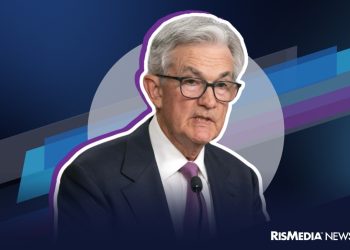Federal Reserve Chairman Jerome Powell was clear in new remarks Tuesday that the central bank has no intention of cutting rates until the U.S. makes sustained progress in bringing down inflation.
The Fed chief said that recent economic data has undoubtedly shown the U.S. economy’s resilience and strong performance over the past year, especially in the labor market. Despite these positive trends, a lack of sustained progress in lowering inflation to the central bank’s 2% target will keep talk of any rate cuts at bay—at least for now.
Powell’s comments Tuesday came during a moderated discussion with Tiff Macklem, governor of the Bank of Canada, at the Washington Forum on the Canadian Economy in Washington, D.C. His remarks signal that a rate cut is unlikely at the Fed’s next meeting in May as the central bank stands firm on its “higher for longer” monetary policy in its determined fight to lower inflation.
“Core (personal consumption expenditures) inflation, which is one of the most important things we look at, is estimated to have been little changed in March over February at 2.8%,” Powell said.
Powell added that recent data have “clearly not given us greater confidence,” on moderating inflation. He said the central bank expects it’ll take longer than anticipated to secure that assurance.
“That said, we think policy is well-positioned to handle the risks that we face,” Powell said. “If higher inflation does persist, we can maintain the current level of restriction for as long as needed. At the same time we have significant space to ease should the labor market unexpectedly weaken.”
He added, “Right now, given the strength of the labor market and progress on inflation so far, it’s appropriate to allow restrictive policy their time to work and let the data and outlook guide us.”
Markets reacted immediately to Powell’s remarks. The 2-year yield note jumped to a five-month high just above 5% while the 10-year Treasury yield rose about 6 basis points to 4.69%, according to a Yahoo Finance report.
Powell pointed to strong payroll job gains averaging just above 275,000 per month over the first quarter of 2024. He also noted that unemployment has stayed below 4% for 26 consecutive months—the longest streak of its kind.
Demand for workers is being met by a substantial increase in the workforce thanks to rising labor participation and a sizable increase in immigration to the U.S., a trend that Canada is seeing as well, Powell said. These trends, he added, indicate the labor market moving into “better balance” and a gradual normalization after the wild swings of the pandemic era.











